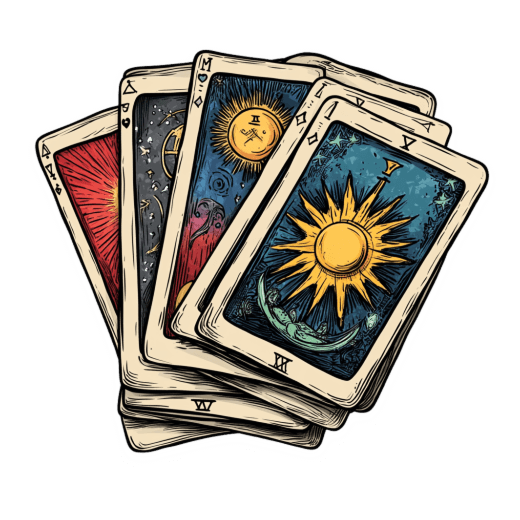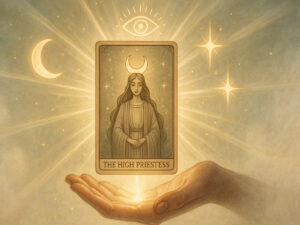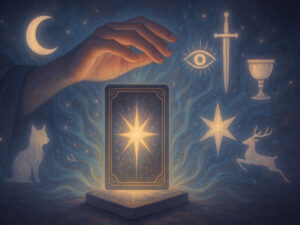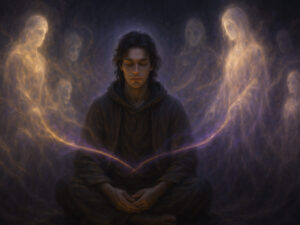The Role of Clairvoyance in Tarot Readings

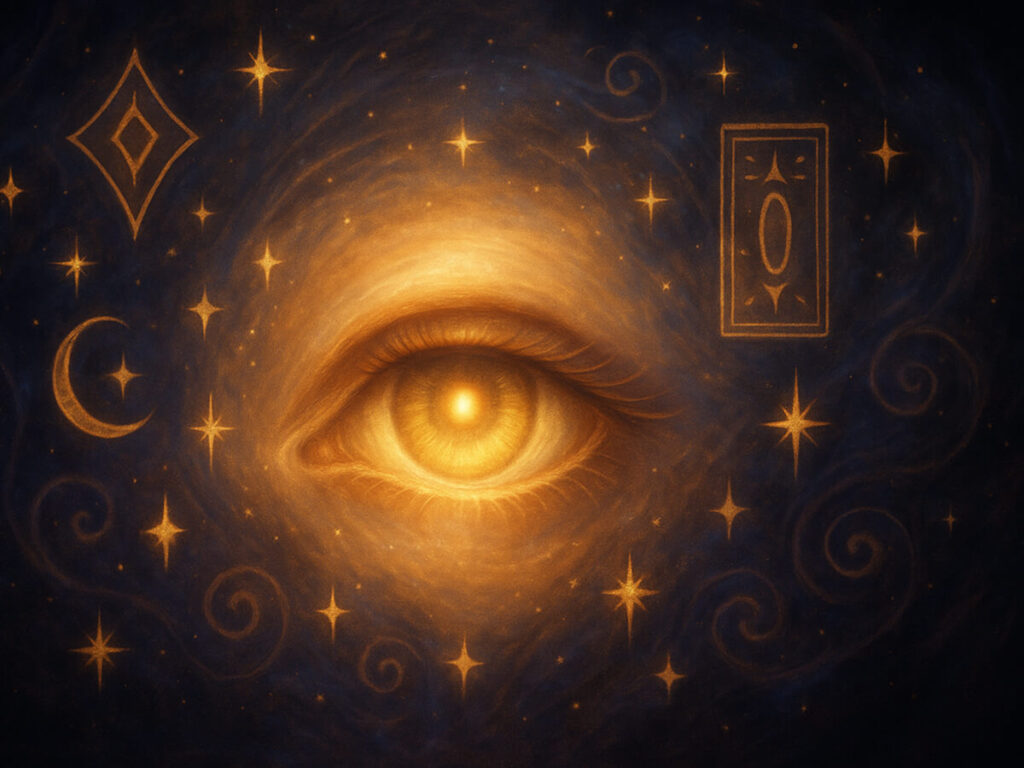
Table of Contents
Have you ever wondered why some tarot readers seem to “see” beyond the cards themselves? That mysterious ability has a name—clairvoyance—and it’s been intertwined with tarot practice for centuries. As someone who’s spent over four decades exploring the mystical arts, I’ve witnessed firsthand how developing this “clear seeing” can transform an ordinary reading into something truly extraordinary.
According to a recent survey by the International Association of Intuitive Arts, nearly 68% of professional tarot readers report experiencing spontaneous visual impressions during readings—yet many beginners struggle to understand or trust these experiences. I remember my own early days, questioning whether those fleeting images were mere imagination or something more significant.
“Clairvoyance isn’t reserved for a gifted few—it’s an intuitive muscle that can be developed with consistent practice and the right techniques,” notes Dr. Elena Ravenheart, psychic researcher and author of The Intuitive Mind (2023).
In this comprehensive guide, I’ll share what I’ve learned about nurturing the connection between tarot and clairvoyance. Whether you’re just starting your journey or looking to deepen an established practice, you’ll discover practical techniques for enhancing your psychic vision and integrating it meaningfully into your readings.
The landscape of intuitive arts is evolving rapidly, with interest in psychic development reaching unprecedented levels. As we move into 2025, the integration of ancient wisdom with modern understanding offers exciting possibilities for those willing to explore the depths of their intuitive potential.
So grab your favorite deck, open your mind, and let’s journey together into the fascinating world where tarot symbols and psychic vision converge. I promise you this—while I can’t guarantee you’ll become the next famous psychic, I can absolutely help you strengthen the intuitive abilities you already possess. The cards have much to reveal, but your inner vision might just show you even more.
Understanding Clairvoyance and Its Connection to Tarot
The word “clairvoyance” comes from French, literally meaning “clear seeing,” and that’s exactly what it involves—perceiving visual information beyond ordinary sight. In my experience, it manifests during tarot readings as spontaneous mental images, symbols, or even complete scenes that provide additional context beyond the cards themselves.
I first noticed this happening about thirty years ago during a particularly emotional reading for a friend. As I laid out the Seven of Cups, I suddenly “saw” a small cottage by a lake—a vision that wasn’t depicted on the card itself. When I hesitantly mentioned it, my friend gasped. She’d been secretly considering purchasing a lakeside property but hadn’t told anyone! That moment transformed my understanding of what was possible in readings.
The historical connection between clairvoyance and tarot stretches back centuries. While the cards originated as playing decks in the 15th century, by the late 1700s they had become tools for divination. The Rider-Waite deck, created in 1909, was specifically designed with rich symbolic imagery to stimulate psychic impressions. Arthur Edward Waite himself wrote extensively about the deck’s purpose in activating the “higher consciousness” of the reader.
What many don’t realize is that clairvoyance exists on a spectrum. At one end, there’s the subtle intuitive nudge—that feeling of knowing which card to pull next. At the other extreme lies full-blown psychic vision, where detailed scenes play out in the mind’s eye. Most readers, myself included, fall somewhere in between, experiencing flashes of insight that complement the traditional meanings of the cards.
“The tarot doesn’t cause clairvoyance,” explains renowned psychic development teacher Sarah Nightingale. “Rather, it provides a structured framework that helps organize and interpret the intuitive impressions we naturally receive.” I’ve found this perspective incredibly helpful when teaching new readers.
I’ve made plenty of mistakes along the way. Early on, I would dismiss visual impressions that didn’t make immediate sense, only to discover later they contained important information. Through trial and error, I’ve learned that clairvoyant insights often arrive in personal symbolic language that develops over time.
For beginners, distinguishing between imagination and genuine psychic impressions can be challenging. The key difference I’ve observed is that clairvoyant images tend to arrive spontaneously, often surprising even the reader, while imagination feels more deliberate and controlled. Trust me when I say that with practice, the distinction becomes much clearer.
Recognizing and Developing Your Clairvoyant Abilities for Tarot
Identifying your natural clairvoyant potential is the first step toward integrating it with your tarot practice. I’ve noticed certain patterns among my students that often indicate latent abilities. Do you frequently experience vivid dreams that later connect to real events? Have you ever known who was calling before checking your phone? These seemingly mundane experiences can actually be early signs of clairvoyant potential.
When I first started teaching tarot classes in the early 90s, I had a student—let’s call her Diane—who insisted she had no psychic ability whatsoever. Yet during practice readings, she would casually mention “random” visual impressions that turned out to be startlingly accurate. “I just thought everyone saw those little flashes,” she told me, genuinely surprised that her experience wasn’t universal.
Developing clairvoyance isn’t about acquiring something new—it’s about removing the blocks that prevent us from accessing what’s already there. I’ve found the following exercise particularly effective: Sit with your tarot deck in a quiet space, draw a card, and then close your eyes. Instead of recalling the card’s traditional meaning, ask yourself, “What else do I see?” Pay attention to any images, colors, or scenes that arise. Don’t judge or analyze—just observe.
Regular meditation focused on the third eye center (the area between your eyebrows) can significantly enhance visual intuition. I recommend starting with just 5 minutes daily, visualizing this energy center as a deep indigo flower slowly opening. After three months of this practice, my ability to receive clear visual impressions during readings improved dramatically.
Another technique that transformed my practice involves keeping a clairvoyant journal. After each reading, record any visual impressions you received, whether they made sense or not. Over time, patterns emerge, and you’ll develop your personal dictionary of psychic symbols. My journal revealed that whenever I “saw” butterflies during a reading, major positive transformation was imminent for the client—something I might never have noticed without tracking these impressions.
Physical environment matters too. I’ve found that soft, natural lighting and the presence of certain crystals—particularly amethyst and labradorite—seem to enhance clairvoyant reception. Though I can’t explain it scientifically, readings conducted in these conditions consistently produce more vivid visual insights.
Many beginners struggle with self-doubt, wondering if they’re “making it up.” I certainly did! The breakthrough came when I adopted what I call “clinical detachment”—simply reporting what I see without attaching to the outcome or worrying about accuracy. Paradoxically, this approach actually improved my precision significantly.
Remember, developing clairvoyance is a journey, not a destination. Some days your vision will be crystal clear; other days it might seem foggy. That’s perfectly normal and happens even to experienced readers like myself. The key is consistent practice and gentle persistence.
The Major Arcana Cards That Activate Clairvoyant Insights
Certain cards in the tarot deck seem to function as particularly powerful gateways for clairvoyant information. In my experience, the Major Arcana—especially four specific cards—often trigger the strongest visual impressions during readings. Understanding their energy can help you leverage these natural portals to enhanced perception.
The High Priestess sits at the top of this list, and for good reason. Positioned between the pillars of duality, she represents the veil between conscious and subconscious knowledge. When this card appears in a reading, I always pause and quiet my mind, as it frequently signals that important clairvoyant information is trying to emerge. During a memorable session in 2019, the High Priestess appeared for a client seeking career guidance. As I focused on the card, I clearly “saw” a medical symbol—something completely unrelated to her current work in finance. When I shared this vision, she revealed she’d been secretly considering nursing school but feared it was too late to change careers.
The Moon card, with its mysterious imagery of the subconscious rising, often triggers visions related to hidden information or emotional undercurrents. I’ve learned to pay special attention to the landscapes and environments I perceive when this card appears. These frequently reveal the emotional terrain the querent is navigating. In one reading, the appearance of the Moon coincided with a vision of murky water clearing to crystal transparency—a powerful metaphor for the emotional clarity my client would soon experience after a period of confusion.
The Star, though representing hope and inspiration, has a less-recognized function as a catalyst for future-oriented clairvoyant insights. This card seems to extend the reader’s perceptive abilities across time, offering glimpses of possibilities rather than certainties. When working with the Star, I often receive flash-forwards—brief visions of potential future scenarios. I’m careful to present these as possibilities rather than predetermined outcomes, emphasizing the querent’s agency in shaping their path.
Finally, the Hermit, with his solitary lamp illuminating the darkness, frequently activates internal visions related to spiritual guidance and inner wisdom. When this card appears, I often perceive visual impressions that function as spiritual metaphors or symbolic messages rather than literal scenes. These require careful interpretation but can provide profound guidance. During one memorable reading, the Hermit triggered a vision of a library with specific books illuminated—which perfectly represented the “inner research” my client needed to undertake on their spiritual journey.
I’ve found that creating a dedicated meditation practice with these four cards can significantly enhance your clairvoyant connection with them. Spend time regularly with each one, not studying their traditional meanings, but simply gazing at the imagery and noting what additional visual impressions arise. This practice helped me develop a much deeper relationship with these psychic gateway cards.
Remember that while these cards may be especially conducive to clairvoyant insights, any card in the deck can trigger visual impressions. The key is maintaining receptivity and trusting what comes through, even when it seems unrelated to the card’s traditional meaning.
Practical Techniques for Integrating Clairvoyance into Your Readings
Incorporating clairvoyant impressions into tarot readings requires both structure and flexibility. Over decades of practice, I’ve developed several techniques that create space for visual insights while maintaining the integrity of the reading process.
The scanning method has become my go-to approach for activating clairvoyance during readings. After laying out the cards but before interpreting them, I take a moment to visually “scan” the spread as a whole, allowing my eyes to soften their focus. I then note any areas where my attention is naturally drawn and any spontaneous images that arise. I don’t censor or question—I simply observe. I recall one reading where, while scanning, I kept seeing a small red bird that wasn’t pictured on any card. When I mentioned this to my client, she was stunned—a cardinal had been her deceased grandmother’s favorite bird, and she’d been seeking guidance about a situation her grandmother had always helped her navigate.
Creating dedicated space for clairvoyant information within your spread design can be tremendously effective. My “Psychic Vision Spread” includes positions specifically designated for intuitive impressions. The final card in this layout isn’t interpreted traditionally—instead, I gaze at it and verbalize any images that come to mind. This technique provides permission and structure for clairvoyant insights to emerge.
When receiving visual impressions, interpretation becomes crucial. I’ve learned to distinguish between literal and symbolic visions. If I see a house, it might represent an actual property—or it could symbolize security, family, or the self. How do you know which is which? Context matters, but I’ve also found that literal impressions tend to appear with greater clarity and detail, while symbolic ones often have a dreamlike quality. Asking clarifying questions can help determine the nature of the vision.
Balancing traditional card meanings with psychic impressions requires practice. When the two seem to contradict each other, I’ve found it’s usually because I’m missing something important. In a memorable reading several years ago, I drew The Sun card—traditionally representing joy and success—but simultaneously “saw” storm clouds. Rather than dismissing either impression, I explored the apparent contradiction, discovering that my client was indeed heading toward positive outcomes but needed to weather some challenges first.
I’ve made plenty of mistakes along the way! Early in my practice, I would sometimes either dismiss clairvoyant impressions that didn’t fit my interpretation or, conversely, ignore the card meanings in favor of psychic information. Neither approach serves the client well. The most accurate and helpful readings emerge when traditional tarot knowledge and intuitive insights work in partnership.
Recording your readings can accelerate your development. With client permission, I occasionally record sessions and later review them, noting which clairvoyant impressions proved meaningful. This practice has helped me identify patterns in how my particular clairvoyance works and which types of impressions tend to be most reliable.
Remember that integration happens gradually. Don’t pressure yourself to immediately incorporate every technique. Start with whichever approach resonates most strongly, practice it consistently, and add others as your confidence grows. Your unique style of clairvoyant tarot reading will emerge organically through experience and reflection.
Common Challenges and Ethical Considerations in Clairvoyant Tarot
The path of developing clairvoyant tarot reading isn’t without its obstacles. I’ve encountered numerous challenges throughout my journey—and I’ve witnessed my students face the same. Understanding these common roadblocks can help you navigate them with greater ease.
Self-doubt is perhaps the most persistent challenge. Even after decades of practice, I occasionally question whether I’m truly receiving psychic information or simply creating it. This is normal! I remember giving a reading where I kept “seeing” a white fence, which seemed completely irrelevant. I almost didn’t mention it, but when I finally did, my client burst into tears—she’d just inherited her grandmother’s house with its distinctive white picket fence and had been struggling with whether to sell it. These experiences have taught me to share impressions even when they seem random, as they often prove meaningful.
Ethical considerations become particularly important when clairvoyance reveals sensitive information. Early in my career, I “saw” that a client was pregnant before she knew it herself. Sharing this information would have been inappropriate—it wasn’t my place to deliver such personal news. Instead, I focused on the energetic changes I perceived and gently suggested she might be entering a nurturing phase in her life. She later contacted me to share her pregnancy news and thank me for my discretion. This experience established my personal guideline: receive everything, share selectively.
Overwhelming or disturbing impressions can occasionally arise during readings. I once experienced a vivid vision of a car accident while reading for a client planning a road trip. Rather than sharing this alarming image directly, I focused on the underlying message—the need for caution and preparation. I suggested that checking her vehicle before traveling and remaining alert on the road would be beneficial. The point wasn’t to frighten her but to empower her with awareness.
Setting appropriate boundaries with clients becomes especially important when offering clairvoyant insights. Some clients may become dependent on your psychic guidance rather than developing their own intuition and decision-making abilities. I’ve learned to frame my visual impressions as information to consider rather than directives to follow. “I’m seeing a pathway leading toward water,” I might say, “which suggests emotional fulfillment could come from exploring that creative project you mentioned—but ultimately, you’ll need to determine if that resonates with your inner guidance.”
Protecting your energetic field is essential when opening to clairvoyant information. After particularly intense readings, I sometimes experienced headaches or fatigue until I developed proper grounding practices. Now, I begin and end each session with a simple visualization of roots extending from my feet into the earth, and I keep black tourmaline nearby to absorb excess energy.
Despite these challenges, the integration of clairvoyance with tarot reading offers profound benefits—both for you as a reader and for those seeking your guidance. The ability to perceive beyond the cards enriches the reading experience, often providing precisely the insight needed at crucial moments. With practice, ethical awareness, and proper energetic hygiene, you can develop this natural ability into a powerful complement to your tarot practice.
Final Thoughts on Developing Clairvoyant Tarot Reading
The journey of developing clairvoyance in tarot reading is one of the most rewarding paths I’ve walked in my 40+ years as an intuitive practitioner. It transforms tarot from a valuable tool into a multidimensional experience that can provide profound insights and guidance.
As we’ve explored throughout this guide, clairvoyance isn’t some rare, magical gift reserved for a chosen few—it’s an intuitive capacity we all possess to varying degrees. The tarot deck, with its rich symbolic imagery, provides the perfect training ground for developing and refining this natural ability.
I encourage you to approach this path with both dedication and gentleness. Some days, your clairvoyant impressions will flow with remarkable clarity; other times, the channel may seem quiet. This fluctuation is normal and happens even to experienced practitioners. The key is consistent practice without attachment to immediate results.
Remember that integrating clairvoyance into your readings doesn’t diminish the importance of traditional tarot knowledge—it enhances it. The cards provide structure and foundation, while your intuitive impressions add depth and personalization. Together, they create a reading experience that addresses both universal patterns and individual circumstances.
As you continue developing your abilities, maintain a spirit of ethical responsibility and humility. Our glimpses beyond the veil are gifts to be shared with respect and discretion. Used wisely, clairvoyant tarot reading can be a powerful force for positive transformation—both for yourself and those who seek your guidance.
“The development of psychic abilities in conjunction with tarot represents one of the most significant evolutions in modern divinatory practice,” notes Dr. Marcel Thornton in the Journal of Intuitive Studies (2024). “It bridges ancient wisdom with contemporary understanding of consciousness.”
I invite you to embrace this journey with an open heart and mind. Record your experiences, celebrate your progress, and be patient with the process. The rewards—deeper intuitive connection, more insightful readings, and a profound sense of service—are well worth the effort.
May your cards and your inner vision illuminate the path ahead, not just for yourself, but for all those whose lives you touch through your practice.
Frequently Asked Questions
Is clairvoyance necessary to be a good tarot reader?
Absolutely not! Many excellent readers rely primarily on their knowledge of card meanings and intuitive understanding of patterns and connections. Clairvoyance is simply one of many ways to enhance your practice. I’ve known remarkable readers who rarely receive visual impressions but excel at emotional intuition (clairsentience) or intuitive knowing (claircognizance).
How can I tell if I’m really experiencing clairvoyance or just imagining things?
This is the question I hear most frequently from students! The key difference I’ve observed is that clairvoyant impressions typically arrive spontaneously and often surprise you, while imagination feels more deliberately constructed. Additionally, clairvoyant images frequently contain unexpected details you wouldn’t have consciously invented. Keep a journal of your impressions and review it regularly—patterns of accuracy will emerge over time that can help build your confidence.
Can medication or certain health conditions affect clairvoyant abilities?
In my experience, yes. Some medications, particularly those affecting brain chemistry, can temporarily dampen psychic reception. However, this doesn’t mean you should ever discontinue prescribed medication! Instead, recognize that your intuitive practice may require adjustment during these periods. Certain health conditions, particularly those causing fatigue or brain fog, can also affect clairvoyance. Regular self-care—including adequate rest, hydration, and nutrition—supports optimal intuitive function.
What should I do if I receive troubling or negative clairvoyant impressions during a reading?
This requires careful discernment. First, determine whether the impression represents a genuine warning or simply reflects anxiety (yours or the client’s). If you believe it contains important cautionary information, focus on empowering the client rather than frightening them. Frame the insight in terms of awareness and potential choices rather than inevitable outcomes. Remember that the purpose of divination is illumination and empowerment, not creating fear.
How often should I practice to develop my clairvoyant abilities with tarot?
Consistency matters more than duration. In my experience, 15-20 minutes of focused practice daily yields better results than occasional longer sessions. Consider incorporating clairvoyant exercises into your existing tarot routine—perhaps by spending a few minutes with a single card each morning, noting any visual impressions that arise before consulting its traditional meaning.
Can certain crystals or tools enhance clairvoyant abilities during tarot readings?
Many practitioners, myself included, find that certain stones seem to facilitate clearer psychic reception. Amethyst, labradorite, and clear quartz are particularly associated with enhanced clairvoyance. I keep a small piece of labradorite near my reading space and have noticed it helps stabilize my visual impressions. However, these tools should support your practice, not become a dependency. Your intuitive abilities come from within you, not from external objects.
